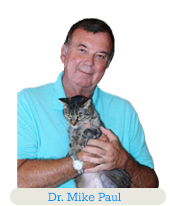
One of the most enjoyable outdoor activities for me personally is fishing, and generally dogs enjoy it too. There are, however, a few precautions to take when fishing with your dog. First of all, dogs can be injured by lures and hooks, either by getting caught on them or by swallowing them. Less commonly, dogs can be injured by a large fish flopping and flailing around. They can also fall overboard or slip into the water from a steep bank where, if the current is fast, they can swiftly be swept downstream. Lastly, raw fish can pass along a dangerous condition called salmon poisoning disease (SPD). Salmon poisoning disease is expanding to new parts of the country and you should be aware of it, not only when you’re boating, but even when you’re gardening!
What is salmon poisoning disease?
Contrary to the name, salmon poisoning disease is not a poisoning at all, but rather an infectious disease caused by a parasite called Nanophyetus, which becomes infected with a rickettsial organism called Neorickettsia helminthoeca. It’s this microorganism that causes salmon poisoning disease.
Surprisingly, it’s not exclusive to salmon; perhaps even more surprisingly, the organism responsible for the disease is not harmful to fish.
Where is the risk of salmon poisoning disease highest?
Salmon poisoning disease was once a regionalized danger-somewhat limited to the Pacific Northwest. SPD has more recently been reported in other areas though, including California1. Infected fish have been found in the Pacific Ocean from Brazil to the coast of Alaska, but salmon poisoning disease is more prevalent from northern California to Puget Sound. It’s also seen inland, along the rivers of fish migration2.
It’s also seen inland, along the rivers of fish migration2.
How is salmon poisoning disease transmitted?
Salmon poisoning disease is transmitted by eating or even licking raw fish—primarily members of the salmon family, including trout. This parasite’s life cycle begins in a stream snail called Oxytrema silicula. After a period of time the snail is consumed by a fish—most often a salmon fish, but not always. Dogs (not the only mammal to host the parasite) can then get it by licking or eating affected fish.
What are the symptoms of salmon poisoning disease?
According to Washington State University, common symptoms of salmon poisoning disease include:
- Vomiting
- Lack of appetite
- Fever
- Diarrhea
- Weakness
- Swollen lymph nodes
- Dehydration
If not treated, most infected animals will die within just a few weeks of infection.
Diagnosis of salmon poisoning disease
Most cases of salmon poisoning disease are diagnosed empirically, based on a known or suspected exposure to salmon or trout. Clinical signs, coupled with recent exposure to fish, are generally highly suggestive of a disease. PCR testing is recommended to confirm the diagnosis.
Other ways do diagnose salmon poisoning disease include:
- A fecal sample (detecting the parasite’s eggs as they are shed in the feces confirms its presence3).
- A needle sample of a swollen lymph node (the rickettsial organism can be detected this way3).
Treatment of salmon poisoning disease
For such a dangerous disease, salmon poisoning disease is surprisingly easy to treat and, if caught early, can be very responsive to treatment. Treatment consists of supportive therapy for the symptoms and antibiotics to clear the organism.
How can I protect my dog from salmon poisoning disease?
Every precaution should be taken to prevent dogs from ingesting raw fish:
- NEVER ALLOW DOGS TO EAT ANY RAW FISH OR RAW-FISH PRODUCTS. (Raw fish products would include fish heads or body parts. Though technically not cooked, jerky is processed and dehydrated so parasites would not survive.)
- Keep in mind that dogs can smell fish that have been buried to enrich fertilizer. Never let your dog dig up fish from the garden.
- Fisherman should always practice excellent sanitation tactics when cleaning and preparing fish.
Ask your veterinarian:
- What should I do if I ever suspect my dog may have eaten raw fish?
If you have any questions or concerns, you should always visit or call your veterinarian -- they are your best resource to ensure the health and well-being of your pets.
Resources:
1. "Salmon Poisoning Disease." LA County Department of Public Health. LA County Department of Public Health. Web. 10 Sept. 2014.
2. "Salmon Poisoning Disease and Elokomin Fluke Fever." : Rickettsial Diseases: Merck Veterinary Manual. The Merck Veterinary Manual. Web. 10 Sept. 2014.
3. Hoggan, Sarah. "Salmon Poisoning Disease." Salmon Poisoning Disease. Washington State University. Web. 10 Sept. 2014.
